|
IONIZATION - NEGATIVE
ION GENERATION |
|
About different air cleaning systems, pros and cons and applications
|
|
|
|
|
|
Customer |
|
|
|
|
 |
|
|
|
|
Statement |
|
|
|
The Need for Clean Air:
Indoor air pollution is among the top five
environmental health risks.
The sources of airborne gaseous organic compounds
include tobacco smoke, building materials and furnishings, and products
such as paints, dyes, deodorizers, cleaning chemicals, adhesives and
pesticides.
The indoor air quality of most homes and
commercial buildings lack the proper "electronic" balance needed to
provide an environment that is healthy and clean.
The desire to build "air tight" homes and
buildings to reduce energy consumption has also drastically reduced the
quality of the air inside these facilities.
In addition, since most homes and buildings are
located in urban environments with asphalt and concrete streets and
parking areas plus densely packed buildings, the air in urban areas is
not "electrictronically" balanced to provide good outside air quality.
Most particles including dust, pollen, smoke,
animal dander, odors, and chemical fumes have a positive charge.
Because of the construction of current homes and
buildings to reduce energy loss, these buildings generally have
inadequate amounts of negative ions in the indoor air.
In addition, fluorescent lights, computer
screens, plasma and LCD TVs, ventilation systems and newer building
materials and fabrics contain a high concentration of positive ions.
There have been many scientific studies that have
shown that positive ions can lead to tiredness, fatigue and
irritability.

|
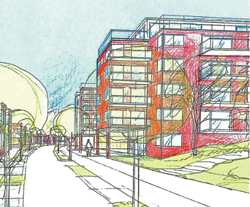 |
|
AirClean |
AirClean |
AirClean |
AirClean |
|
 |
 |
 |
 |
|
References |
Food |
Industrial |
Air Treatment
system |
|
|
|
|
|
|
AirClean |
AirClean |
AirClean |
AirClean |
|
 |
 |
 |
 |
|
Savings |
Filter
Information |
Clean rooms
Techn. info |
Clean rooms |
|
|
 |
|
|
Types of Air Cleaners:
There are several types of air cleaners for
domestic and commercial use.
There are pros and cons for each type.
Below you will find some of the more common air
cleaning devices:

|
|
|
Electrostatic Air Cleaners:
These devices use charged plates to attract
positively charged particles as they move through the air.
They are extremely good particle separators with
up to
99,9% separation ability for particles down to 0.15-0.3 micro.
They are generally designed for small areas and
can clean only a small amount of air. They do not have filters but they
do have plates that need to be cleaned periodically or after an alarm
signal.
They are good energy savers because they have a
constant pressure drop, i.e. no increase of energy use after increasing
pressure drop.
They are suitable for hospitals, industries,
offices and many other types of buildings.
Electrostatic filters in combination with
negative ion generators remove several gases, odors and smells.
Electrostatic filters always provide operational
status for running indication and alarms. |
|
|
|
|
Paper on |
Customer |
|
|
|
 |
 |
|
|
|
Ionization |
Statement |
|
|
Electrostatic filters can with significant
effectiveness remove all air suspended pollutants, even those so-called
fine particles (0.15 - 0.20 micro/size).
Electrostatic filters do not eliminate gases or
emissions.
Electrostatic filters remove viruses and bacteria
(microorganisms).
Electrostatic filters can in combination with
powerful negative ion generation (after the filter) in some degree
reduce the presence of certain gases. (We have not seen any tests, but
there is laboratory evidence to support this claim).
Electrostatic filters can in combination with
negative ion generation effectively eliminate microorganisms and mold.
The exact removal process has been proven and
documented by several authorized tests aiming at confirming the
efficiency of combining the two methods.
Electrostatic filtration appears to reduce
isocyanates but at AP we have no direct experience of how it works.
More about electrostatic filters Below, some gases, which are affected in a
decreasing or an increasing degree by ionization: |
-
Acetone (reduction)
-
Ammoniac (reduction)
-
Benzene (positive change)
-
Butane (positive change)
-
Carbon Monoxide (reduction)
-
Hydrogen Cyanide (reduction)
 |
-
Methane (reduction)
-
Nitrogen Oxide (reduction)
-
Nitrogen Dioxide (reduction)
-
Nitrous oxide (reduction)
-
Styrene (positive change)
|
|
|
Negative Ion Generation:
This type of air cleaner generates negative ions
which then attract the positively charged particles in a building
causing them to fall to the floor or become inert.
These negative ion generators use voltage to
create the negative ions which are particles with one or more extra
electrons.
These devices do not have tubes or filters so
they are much easier to maintain. |
|
|
|
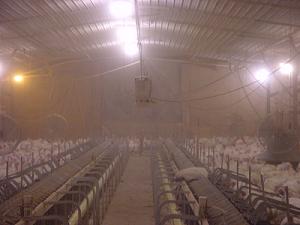 |
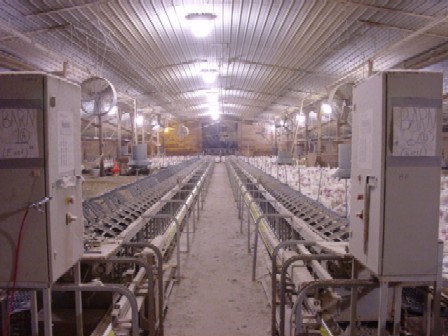 |
|
Before negative ion generation |
After negative ion generation |
|
|
|
|
|
|
|
|
|
|
|
 |
|
|
|
|
Cleaner Air
Healthier Animals |
|
|
|
Negative Ion Emitter mounted before the
filter:

Unwanted in-coming particles are lumped together and get stuck in a
filter.
This method increases the pressure drop. Filters
need to be replaced more often and the energy consumption increases.
The negative ion generation serves primarily as a
protection aginst too much pollution in the plasma ionization system.
The particle separation is not that high - and
completely dependent on the filter selection. |
|
|
Negative Ion Emitter mounted after the
electrostatic filter:
The negative ion generation adjusts the particle separation down to
0.1 micro.
In combination with the assembly before the
filter, this method contributes in a positive way to:
-
Extremely good clean air
-
Clean air ducts
-
Good energy savings
-
Maintaining the right balance between positive
and negative ions
-
Minimal maintenance – Low life cycle costs
with energy savings
-
Saving of the Earth´s resources
The potential health hazard that can occur when
changing the pocket filters is avoided with this system.
Electrostatic filters always provide operational
status and alarms.
More
about ionization and electrostatic filtration

|
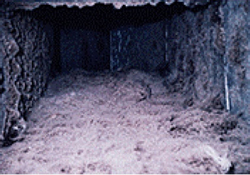
Before negative ion generation
|
|
|
|
Customer |
|
|
|
|
 |
|
|
|
|
Statement |
|
|
|

After negative ion generation
|
|
|
What are Negative Ions?
As noted above, negative ions are electrically
charged particles that have extra electrons.
Air quality contaminants are positively charged
particles.
When these contaminants are in the presence of
negative ions, the contaminants are neutralized electrically causing the
particles to fall to the floor or other surfaces and outside of the zone
where humans breathe fresh air.
In order to keep the indoor air negatively
charged, the generation of negative ions needs to be constant and in the
normal air flow pattern.

|
|
|
Why does the air smells so fresh during
electrical storms, near waterfalls or by the sea shore?
This is because negative ions are created by
nature.
Negative ions have been shown to be an effective
means of cleaning the air of odors, pollen, dust and other contaminants.
There are also many studies that show the
rejuvenating affect of negative ions on a person’s mood.
While negative ion generators and ozone
generators operate in a similar fashion, they are not the same device.
Ozone generators are designed to attract an extra
oxygen atom that is attached to an O2 molecule making O3.
This process is accomplished using a UV light or
corona discharge tube. |
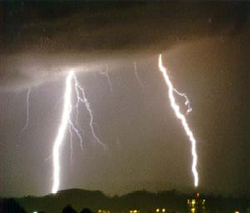
|
|
|
|
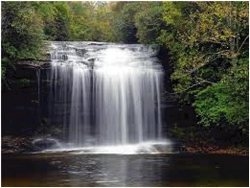 |
|
A Negative Ion Generator creates negatively charged ions
using voltage to electrically charge the passing air flow. As a result,
some Ozone is produced by Negative Ion Generators.
Negative ions and Ozone are not the same thing.
A negative ion is an oxygen atom with an extra
electron and is odorless.
Ozone is oxygen paired with an extra oxygen atom
and can have a distinct odor in high concentrations.
Negative ions and Ozone perform different
functions in cleaning the air.
Negative ions can remove pollen, dust and mold.
Ozone can eliminate odors and some pollutants as
can negative ions.
An excess of negative ions in a room is a good
thing for a person’s well being. However, excess Ozone levels can be
harmful to your health.
 |
|
|
Benefits of Negative Ion Generators:
The following are some of the benefits that are
associated with the introduction of negative ions into an indoor
environment:
|
-
Reduction of pollen levels
-
Reduction of animal dander
-
Elimination of mold spores
-
Reduction of dust and dust mite levels
-
Elimination of smoke
-
Reduction of hay fever and asthma symptoms
-
Mood improvement
 |
-
Improvement in depression and seasonal
affective disorder symptoms
-
Improvement in chronic fatigue symptoms
-
Reduction in household odors
-
Reduction in chemical odors from materials or
fabrics
|
|
|
How Negative Ions Purify the Air:
Negative Ion Generators can purify indoor air by
causing contaminants such as dust, pollen animal dander, mold spores and
bacteria to be neutralized electrically.
When this action occurs these particles are
attracted to each other and ball up falling to the floor or other
surfaces to be cleaned up by a normal cleaning process.
Ionized air does not have to pass through a
filter to perform this action.
The Negative Ion Generator need only be installed
in normal ductwork in a home or building to continually treat the inside
air environment.
The introduction of negative ions in this fashion
will eliminate a lot of the floating contaminants in the air like the
dust you see in a ray of sunshine.
The ability to improve a person’s mood or reduce
season disorders by the introduction of negative ions in the air is
certainly a positive side benefit.

|
|
|
Commercial Applications:
The following are some of the better applications
for negative ion generators in commercial environments due to the nature
of the problems associated with these environments:
|
|
Hospitals
Nursing homes
Schools
Animal feeding and processing plants
Shopping malls
Laboratories
Restaurants and food preparation areas
 |
Veterinary offices
Congress centres and arenas
Churches
Doctors´offices
Prisons
Casinos
Museums
|
|
|
AP meets the
requirements for the
EU-certificates for
-
Low voltage
-
High voltage
-
EMC
-
The Machinery
Directive
|
|
|
More about LCC calculations:
|